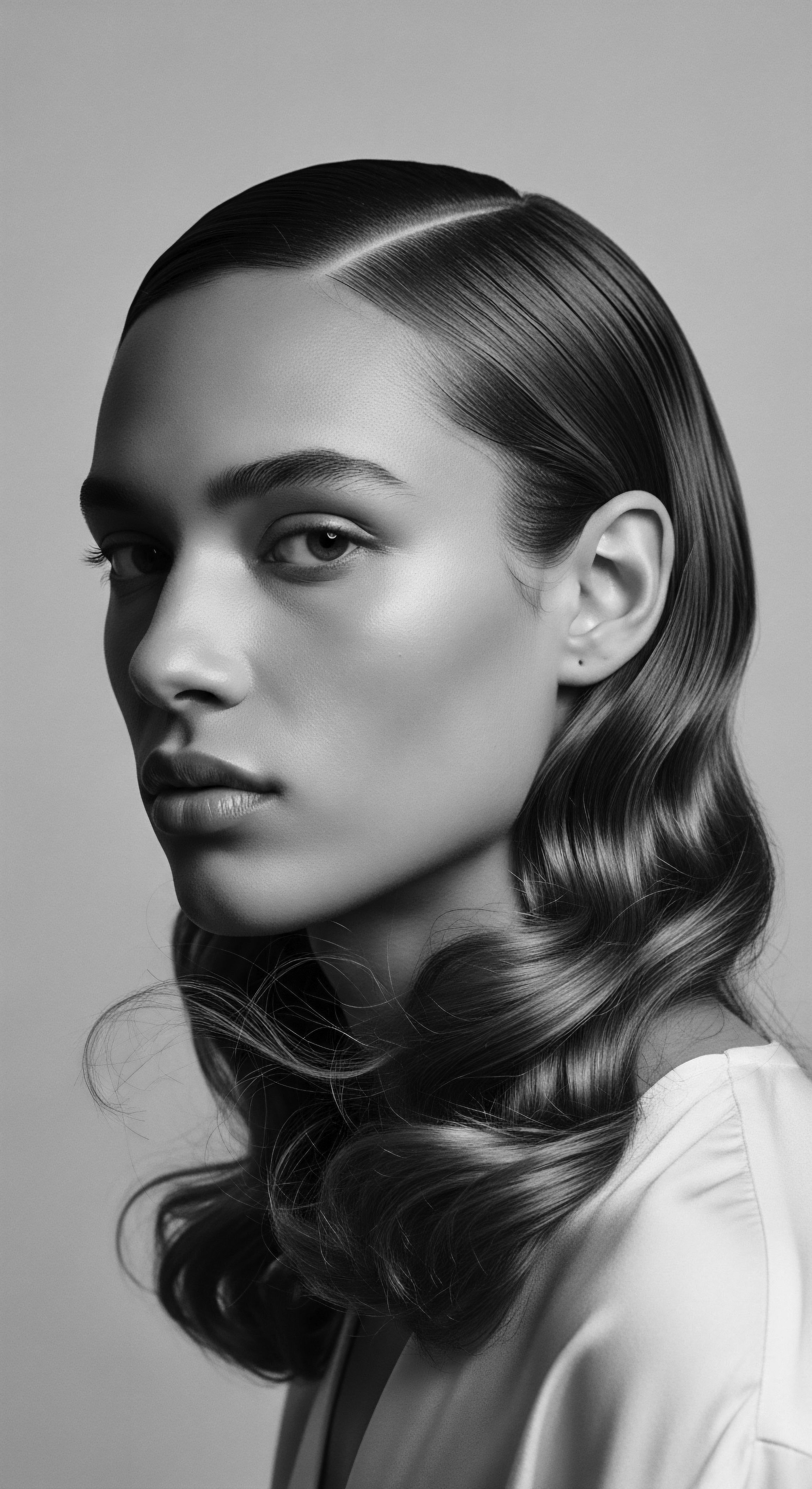
Fundamentals
To truly appreciate the enduring spirit of textured hair, one must first pause at the very source of its magnificent structure ❉ the Disulphide Bond. In simplest terms, these are molecular stitches, covalent linkages formed between the sulfur atoms of two cysteine amino acid residues. Think of them as tiny, yet immensely powerful, anchors that connect strands within the larger protein architecture.
For hair, this protein is primarily Keratin, a fibrous protein found in the outermost layer of the hair shaft. These molecular anchors are not merely structural; they are elemental to the very resilience and unique physical characteristics we observe in every twist, coil, and wave.
The hair strand, often perceived as a simple filament, is a complex biological marvel. Each strand, a testament to ancestral ingenuity and survival, gains its inherent strength and specific configuration from these internal connections. Without the steadfast presence of disulphide bonds, the keratin chains that form our hair would remain loose, disorganized, and utterly lacking in the structural integrity necessary to withstand the world’s myriad elements. This foundational understanding allows us to bridge the wisdom of our forebears with contemporary scientific delineation, recognizing that hair’s very being is predicated on these unseen but vital linkages.
The disulphide bond represents a fundamental molecular anchor, imparting strength and defining the intrinsic curl pattern of textured hair, echoing a deep, ancestral biological wisdom.
The stability these bonds provide influences everything from the hair’s elasticity, its ability to return to its original shape after stretching, to its overall resistance against environmental stressors. Consider the deep heritage of hair manipulation across cultures. From the intricate braiding patterns of ancient African kingdoms to the careful coiling techniques passed down through generations, each practice, whether intuitively or deliberately, has worked with the hair’s innate structure, its disulphide bonds, to achieve desired forms and maintain health. The inherent memory of a curl, its tendency to spring back, is a direct manifestation of these bonds.

The Architectural Role in Hair’s Definition
The disulphide bond’s contribution to hair’s physical definition is substantial. Its presence dictates the number of links within the keratin framework, which in turn influences the hair’s overall shape. More of these bonds, often found more frequently in tightly coiled hair structures, create a denser network of connections, contributing to the distinct curvature and volume.
This biological arrangement speaks to the diverse spectrum of hair textures that grace the global landscape, each an expression of unique genetic lineages. The very notion of what hair is, from its tensile strength to its curl, finds its most basic explanation in these molecular linkages.
- Cysteine Residues ❉ These amino acids form the building blocks for disulphide bonds, acting as the individual sulfur atoms that connect.
- Keratin Structure ❉ The robust protein framework of hair depends heavily on these bonds for its stability and specific configuration.
- Curl Pattern ❉ The arrangement and number of disulphide bonds largely dictate the unique curl, coil, or wave formation of a hair strand.

Early Understandings of Hair’s Strength
Even in antiquity, long before the molecular structures were understood, ancestral communities possessed a profound empirical understanding of hair’s inherent characteristics. The knowledge of hair’s strength, its capacity for intricate styling, and its vulnerability to certain treatments was a part of shared cultural knowledge. Indigenous communities, particularly those of African descent, developed practices that respected the hair’s natural inclinations, recognizing its elasticity and tendency to hold shape.
This ancestral wisdom, though not articulated in scientific terms, laid the groundwork for countless hair care traditions that subtly interacted with the underlying chemistry of disulphide bonds. The definition of hair’s strength, to these communities, was not abstract; it was palpable, felt in the very act of twisting a lock or weaving a protective style.
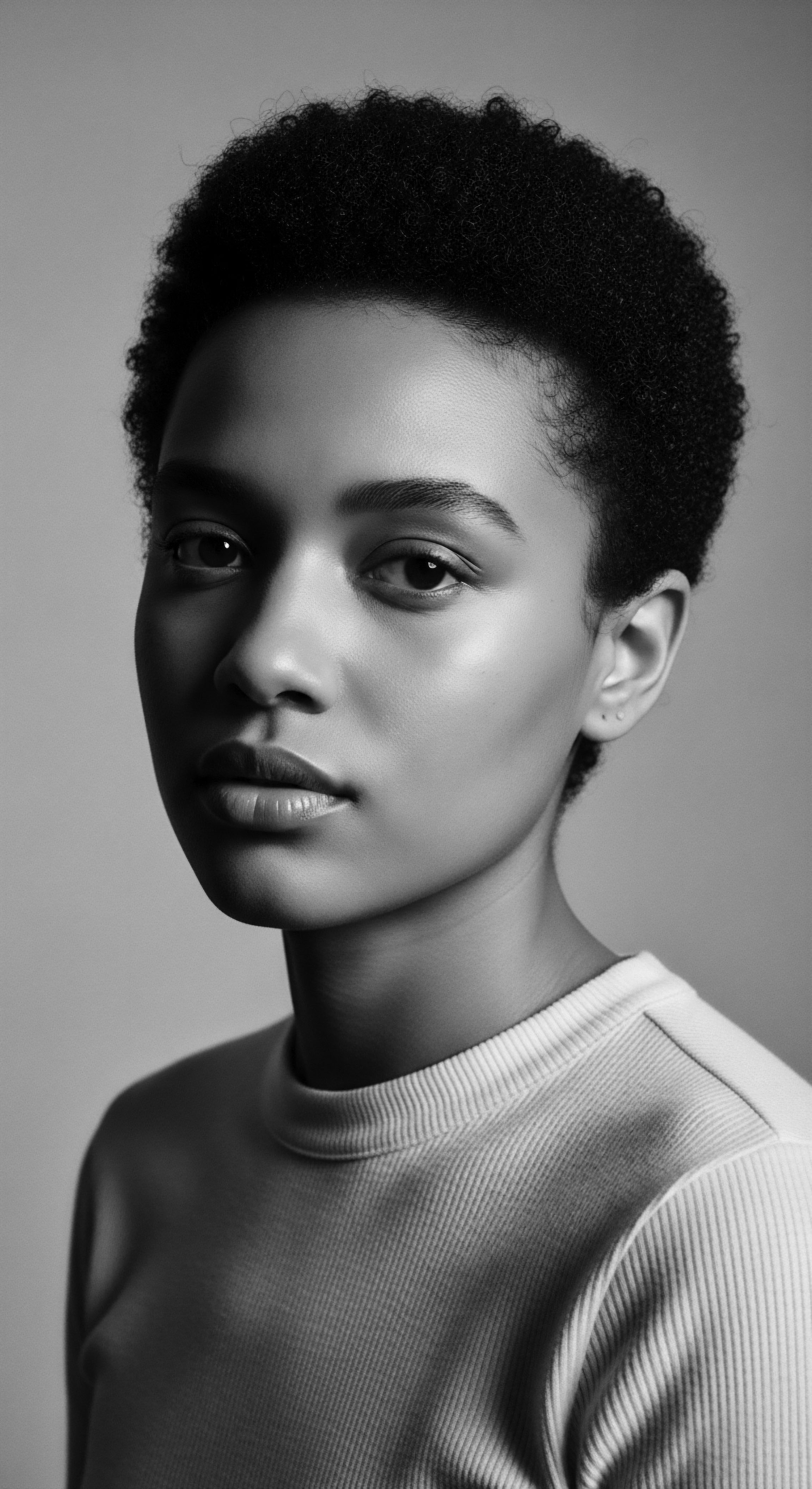
Intermediate
Moving beyond the foundational understanding, the intermediate exploration of the Disulphide Bond unveils its deeper significance within the intricate biology of the hair shaft, especially for textured hair. This bond, a robust covalent connection between two sulfur atoms of cysteine amino acids, serves as a cornerstone in the stability of keratin, the primary structural protein of hair. Unlike weaker hydrogen bonds, which are easily disrupted by water or heat, disulphide bonds are far more steadfast.
Their resilience lends hair its enduring memory, allowing it to spring back after being stretched or manipulated, retaining its inherent shape. The presence and distribution of these bonds dictate not only the mechanical strength of a hair strand but also its unique curl pattern, a defining feature of Black and mixed-race hair.
The molecular architecture of textured hair, with its characteristic spirals, coils, and waves, is intimately tied to the precise arrangement of these bonds. Hair with tighter curls, for instance, often presents a higher density of disulphide linkages oriented in specific ways to create those intricate curves. This inherent biological design has profound implications for hair care and styling practices passed down through generations. Ancestral styling methods, from braiding to threading, often relied on implicitly working with this structural integrity.
The hair’s capacity to hold a styled form, whether a tightly coiled cornrow or a voluminous Afro, owes much to the resilience of its disulphide bonds. The meaning of hair’s shape and tenacity, for those who cultivated these styles, was inextricably linked to this unseen molecular framework.

Disruption and Restoration of Molecular Links
The disulphide bond, while strong, can be chemically altered or broken. This property is exploited in various hair treatments, both historical and contemporary. For centuries, across diverse cultures, hair manipulation has involved the temporary or permanent alteration of hair’s natural form. The application of heat, as seen in traditional hot comb styling or the use of curling irons, can temporarily relax these bonds, allowing hair to be reshaped.
Upon cooling, the bonds re-form, holding the new, albeit temporary, configuration. This fleeting transformation has long been part of the hair experience, allowing for momentary shifts in appearance, a silent dance with hair’s molecular structure.
The interaction between disulphide bonds and external forces, such as heat or chemical agents, underpins both historical and modern hair reshaping techniques.
Chemical processes, however, offer a more profound and lasting alteration. Relaxers and perms, for instance, operate by breaking a significant number of disulphide bonds. This breakage allows the hair to be reconfigured into a new, straighter or curlier pattern. Subsequently, the bonds are re-formed in their new positions, a process known as neutralization, locking in the altered shape.
This chemical intervention represents a more forceful engagement with the hair’s inherent biology, a deliberate redefinition of its physical properties. The historical narrative of Black hair care, in particular, carries the weight of this chemical conversation, as many sought to align their natural textures with prevailing beauty standards through such processes. The comprehension of hair’s structural meaning deepened with these chemical explorations.

Hair Health and Environmental Influences
The integrity of disulphide bonds also bears directly upon overall hair health. Environmental aggressors, such as excessive UV radiation, harsh chemical exposure, or even certain pollutants, can damage these vital linkages. When bonds are compromised, hair becomes brittle, susceptible to breakage, and loses its characteristic elasticity and sheen. This understanding emphasizes the importance of protective measures and restorative practices, many of which have echoes in ancestral wisdom.
Consider the deep historical reliance on natural oils and butters—like Shea Butter or Coconut Oil—within African and diasporic hair traditions. While these ingredients were often chosen for their conditioning and moisturizing properties, their consistent application would have offered a protective barrier, potentially mitigating the environmental stressors that could weaken disulphide bonds. This traditional care, rich in its intent to preserve the hair’s natural beauty and strength, implicitly supported the very molecular integrity that modern science now delineates.
| Aspect Heat Application |
| Ancestral Practices (Implicit Interaction with Bonds) Hot combs, heated stones applied to hair for temporary straightening, often involving natural oils. |
| Modern Practices (Explicit Interaction with Bonds) Flat irons, curling irons, blow dryers; temporary reshaping through thermal bond relaxation. |
| Aspect Chemical Alteration |
| Ancestral Practices (Implicit Interaction with Bonds) Alkaline washes (e.g. ash-based soaps) potentially causing subtle bond disruption; often unintentional. |
| Modern Practices (Explicit Interaction with Bonds) Chemical relaxers, permanent waves (perming), chemical straighteners; deliberate bond breakage and re-formation. |
| Aspect Physical Manipulation |
| Ancestral Practices (Implicit Interaction with Bonds) Braiding, twisting, coiling, threading; shaping hair without direct chemical or major thermal bond change. |
| Modern Practices (Explicit Interaction with Bonds) Hair extensions, protective styles, intricate updos; utilizing mechanical tension to define form. |
| Aspect Both historical and contemporary methods, whether through explicit chemical means or intuitive practice, reflect humanity's ongoing engagement with hair's fundamental disulphide architecture for personal expression and cultural identity. |
The interplay between these bonds and external forces truly shapes the living narrative of our hair, from the ways we’ve traditionally cared for it to the choices we make today for its wellbeing and cultural expression.

Academic
The Disulphide Bond, scientifically articulated, represents a fundamental and defining covalent linkage within the complex fibrous protein matrix of hair, predominantly composed of Alpha-Keratin. This bond originates from the oxidative coupling of sulfhydryl groups (-SH) found on the side chains of two cysteine amino acid residues. The resulting disulfide bridge (-S-S-) forms a stable, irreversible cross-link that confers remarkable mechanical strength, structural rigidity, and elastic memory to the keratin filaments.
Its meticulous arrangement and density within the cortical cells of the hair shaft are primary determinants of an individual’s hair morphology, particularly influencing the inherent helical twisting and coiling observed in highly textured hair phenotypes, which is often prevalent in populations of African and mixed heritage. The academic delineation of this bond provides a profound clarification of hair’s physical properties.
This intricate molecular architecture dictates the macroscopic behavior of hair. The distinct curvilinear geometry of textured hair, from loose waves to tight Z-coils, arises from the asymmetric distribution and arrangement of these disulphide bonds within the hair cortex. Regions with a higher concentration or specific orientation of these linkages can induce greater curvature and resilience. The scientific interpretation of hair’s structural significance is thus inextricably linked to the precise patterning of these fundamental cross-links, influencing not only its tensile strength and elasticity but also its propensity for tangling and its unique volumetric presentation.
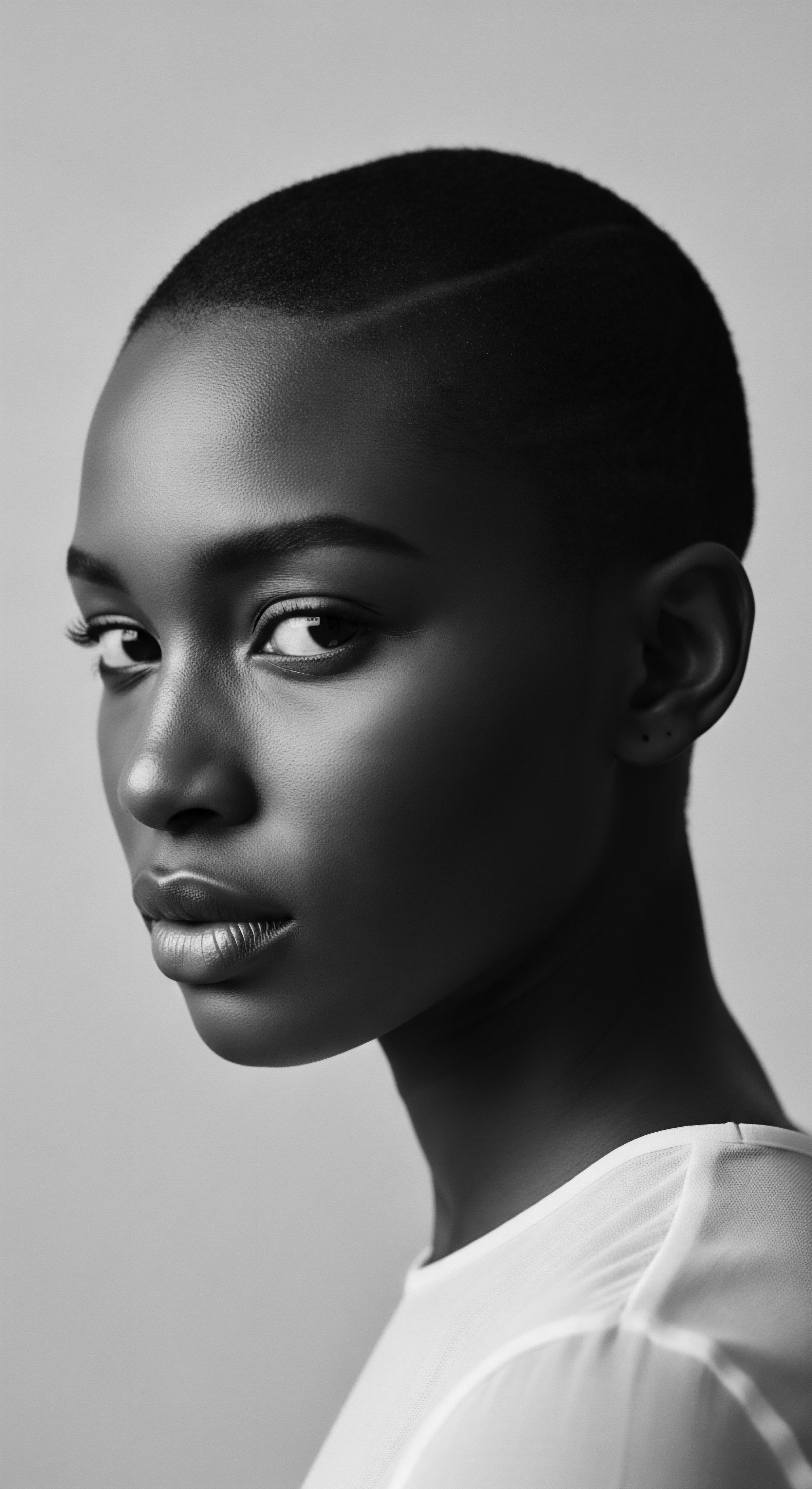
The Conk ❉ A Historical Case Study of Bond Manipulation
To fully grasp the societal weight and scientific impact of disulphide bond manipulation, one might consider the historical context of the “conk” or “conking” process. This pervasive hair straightening method, particularly prominent within African American communities during the early to mid-20th century, involved the application of caustic lye-based chemical concoctions to the hair. The process, often undertaken in secrecy due to its painful nature and societal implications, provides a stark illustration of how desperation for societal acceptance could lead to a profound, and often damaging, chemical restructuring of hair’s fundamental components.
The chemical “conk” offers a powerful historical example of aggressive disulphide bond manipulation driven by the complex interplay of cultural assimilation and evolving beauty standards.
The chemical mechanism of the conk directly targeted the disulphide bonds. The highly alkaline solution, with its elevated pH, facilitated the hydrolytic cleavage of these strong covalent linkages. This disruption of the disulphide bonds allowed the coiled keratin chains to uncoil and straighten. Subsequently, as the hair was rinsed and often neutralized, a subset of these bonds would re-form, albeit in new, straightened configurations.
However, the process was notoriously harsh, often causing severe scalp burns and significant hair damage, including brittle strands and extensive breakage, due to the indiscriminate nature of the lye’s interaction with the hair protein. This historical period offers a poignant clarification of the lengths to which individuals would go to conform to prevailing Eurocentric beauty standards. The historical context reveals how an understanding of hair’s meaning shifted under pressure.
Research by Gittler (1943) extensively documented the immediate and long-term dermatological and structural consequences of these early, unregulated chemical straightening agents on Black hair. His observations, while not explicitly detailing the molecular reaction of disulphide bonds in modern chemical terminology, implicitly describe their severe disruption. Gittler’s work described widespread scalp irritation, chemical burns, and hair loss directly attributable to the caustic nature of the strong alkali solutions, a clear indicator of the profound chemical alterations occurring at the level of the keratin structure.
This historical example underscores the often-unforeseen consequences of manipulating hair’s core chemical infrastructure without a complete understanding of its molecular implications, driven by an imperative for perceived social advancement (Gittler, 1943, p. 112).
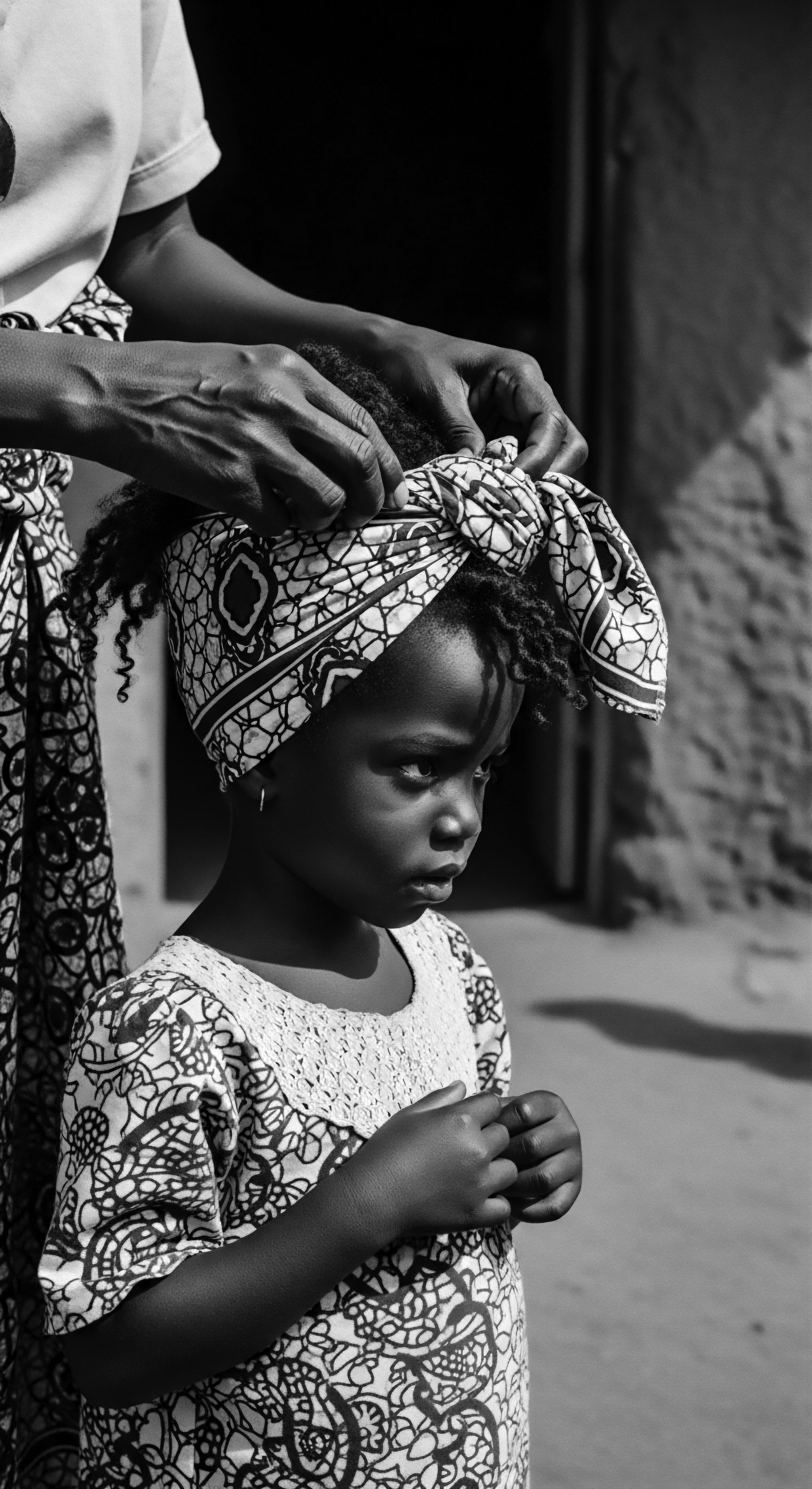
Ancestral Practices and Molecular Resilience
In contrast to the destructive nature of the “conk,” many ancestral practices, while not chemically altering disulphide bonds, served to preserve their integrity and enhance hair health. The deep heritage of oiling, conditioning, and protective styling within African and diasporic communities exemplifies an intuitive understanding of hair’s needs. Natural emollients like Shea Butter, Cocoa Butter, and various plant oils (e.g. baobab, jojoba) were applied to seal moisture into the hair shaft, reducing the friction and environmental exposure that can weaken disulphide bonds.
These practices, passed down through generations, effectively supported the hair’s inherent resilience against external stressors. The cultural significance of these routines extended beyond mere aesthetics; they were acts of preservation, honoring the hair’s natural form and safeguarding its structural meaning.
The strategic application of these emollients could also indirectly support the disulphide bond network by minimizing moisture loss, thereby preserving the hair’s pliable nature and reducing its susceptibility to mechanical stress that could lead to bond fatigue and fracture. The empirical observations made by ancestral hair care practitioners, refined over centuries, provided a practical framework for maintaining the structural soundness of textured hair, long before the scientific elucidation of its molecular components. This historical understanding underscores the deep, unspoken agreement between traditional wisdom and modern scientific principles regarding hair care.
- Oxidative Cleavage ❉ Strong alkaline agents, like those found in early relaxers, chemically break the -S-S- bonds by adding water molecules, leading to bond hydrolysis.
- Mechanical Reconfiguration ❉ Once broken, the keratin chains are physically realigned into a desired shape, often straight, before the bonds are allowed to re-form.
- Neutralization and Re-Formation ❉ An acidic solution is applied to lower the pH, prompting the re-oxidation of sulfhydryl groups and the re-establishment of disulphide bonds in their new positions, locking in the altered structure.
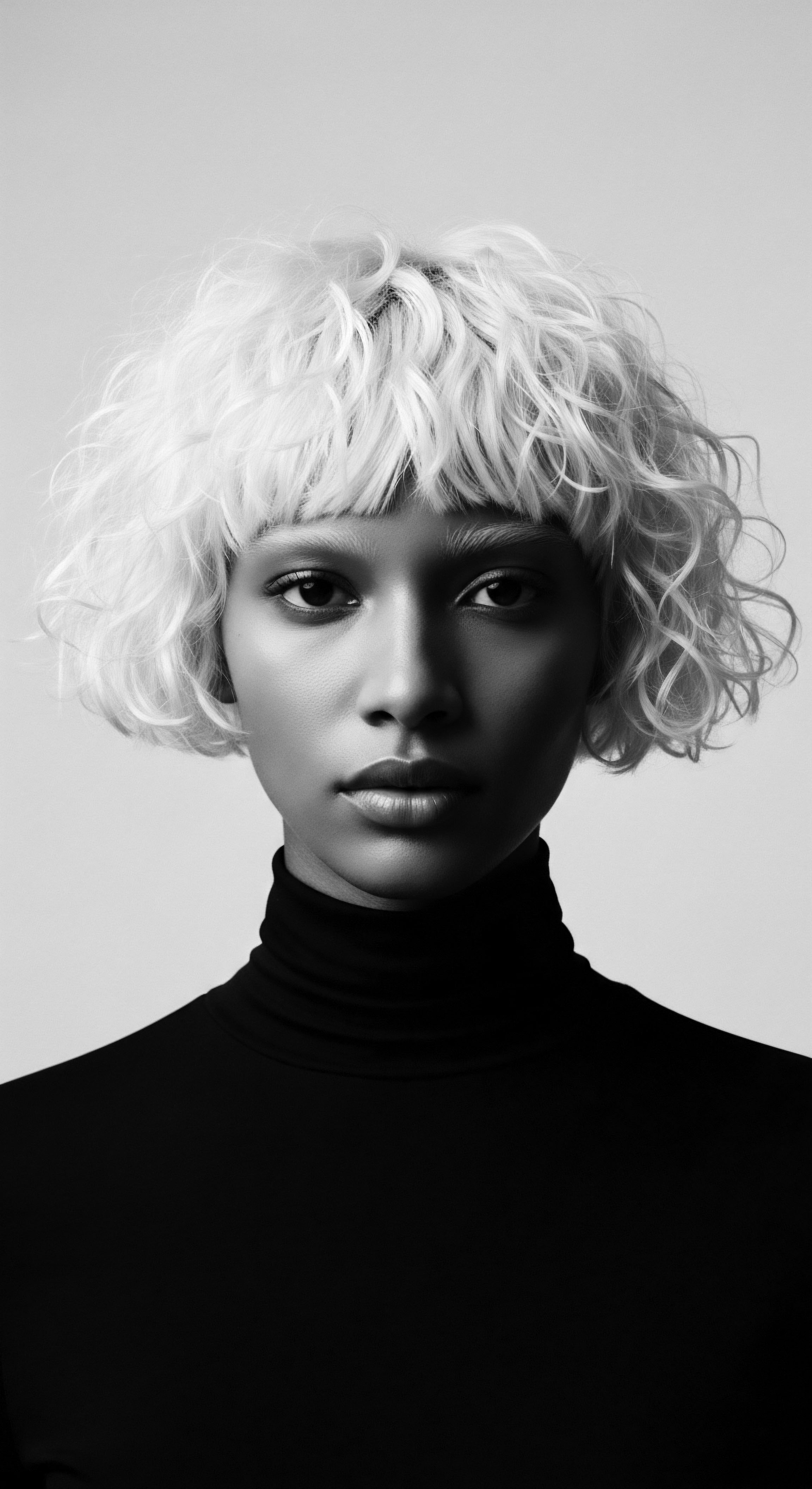
Therapeutic and Future Implications of Disulphide Bond Research
Contemporary research into disulphide bonds extends beyond mere cosmetic alteration, moving towards therapeutic applications and a deeper understanding of hair’s inherent biology. Advances in molecular biology allow for precise manipulation of these bonds, leading to less damaging chemical treatments and innovative hair repair technologies. Bond-building treatments, for instance, are designed to repair or even create new disulphide bonds within the hair shaft, offering restoration for chemically or mechanically damaged hair. This scientific progress allows for a more nuanced approach to hair care, respecting the hair’s natural integrity while still offering avenues for desired aesthetic expressions.
The future of hair care, particularly for textured hair, rests on the continued exploration of these fundamental molecular linkages, ensuring that hair’s strength and identity are preserved and celebrated. This evolving understanding provides an enriched explication of how hair functions.
The conversation about disulphide bonds within the context of textured hair also touches upon the ongoing discourse surrounding Hair Discrimination and the historical pressures to conform. The very act of chemically altering hair, often driven by societal norms that devalue natural textures, implicitly engages with the disulphide bond. A deeper scientific and cultural understanding of these bonds can contribute to a wider appreciation for the natural diversity of hair.
It supports advocacy for hair liberation, empowering individuals to make informed choices about their hair care that align with their personal well-being and ancestral pride, rather than external pressures. This scientific knowledge, when fused with historical and cultural consciousness, strengthens the broader movement towards celebrating the authentic expression of textured hair in all its forms.
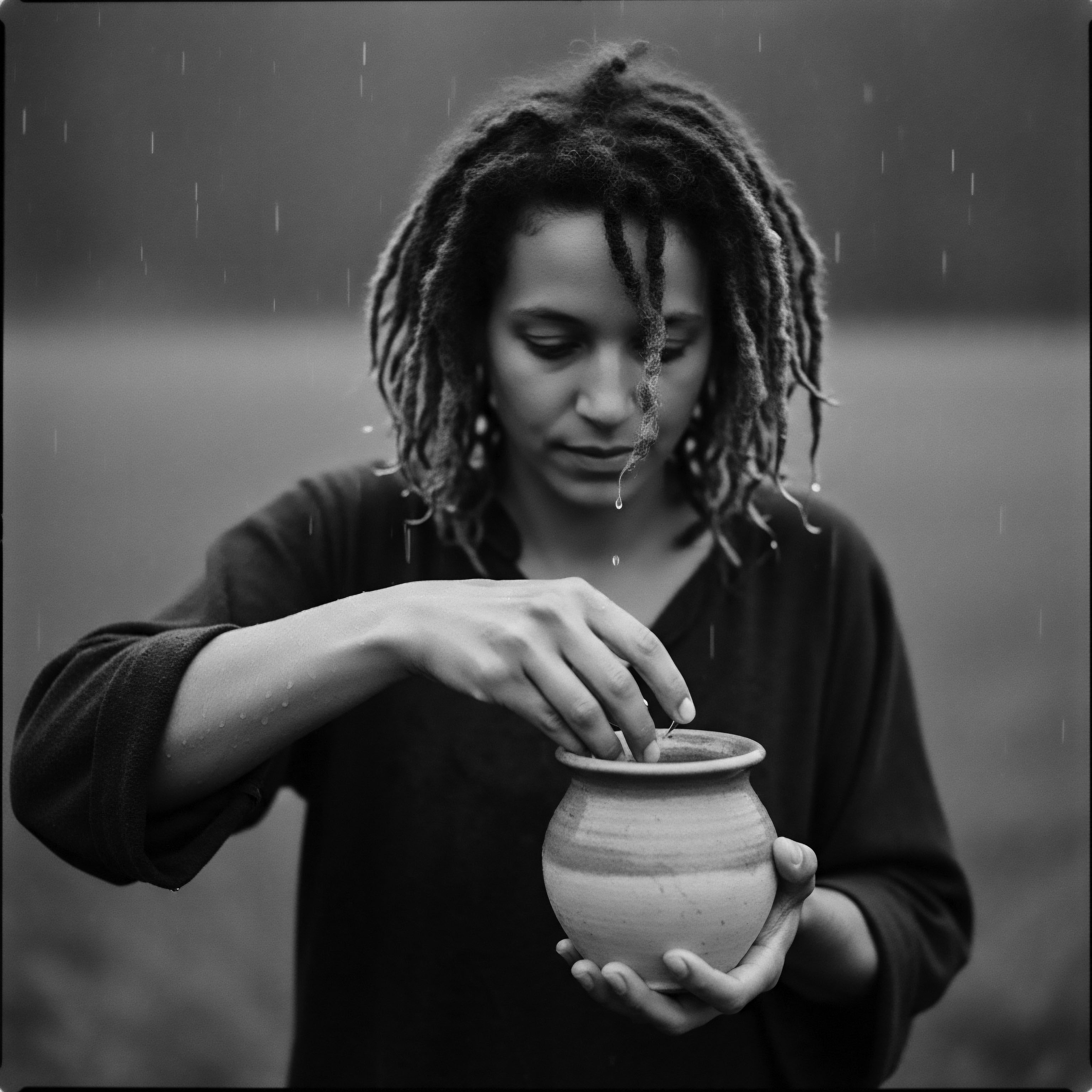
Reflection on the Heritage of Disulphide Bond
Our journey through the molecular landscape of the disulphide bond reveals a profound truth ❉ the very architecture of our hair, particularly its intricate textures, holds within its strands the echoes of generations. This scientific understanding, rather than diminishing the spiritual and cultural weight of hair, amplifies it. From the elemental biology of the sulphur-sulphur link to the historical narratives woven through our ancestors’ hands as they cared for and styled hair, a continuous thread of wisdom emerges. The enduring resilience of textured hair, its capacity to endure and rebound, speaks to the very strength inherent in its molecular foundation.
The deep significance of hair within Black and mixed-race communities, always a marker of identity, status, and artistic expression, now finds a scientific affirmation in the tenacity of these bonds. When we consider the challenges faced, the adaptations made, and the celebrations held through hair across time and continents, the disulphide bond remains a silent, steadfast witness. It is a testament to the hair’s journey from elemental source to a vibrant canvas of selfhood. This understanding invites us to approach our hair not merely as a cosmetic adornment, but as a living archive, each curl and coil a testament to heritage and an unfolding story.
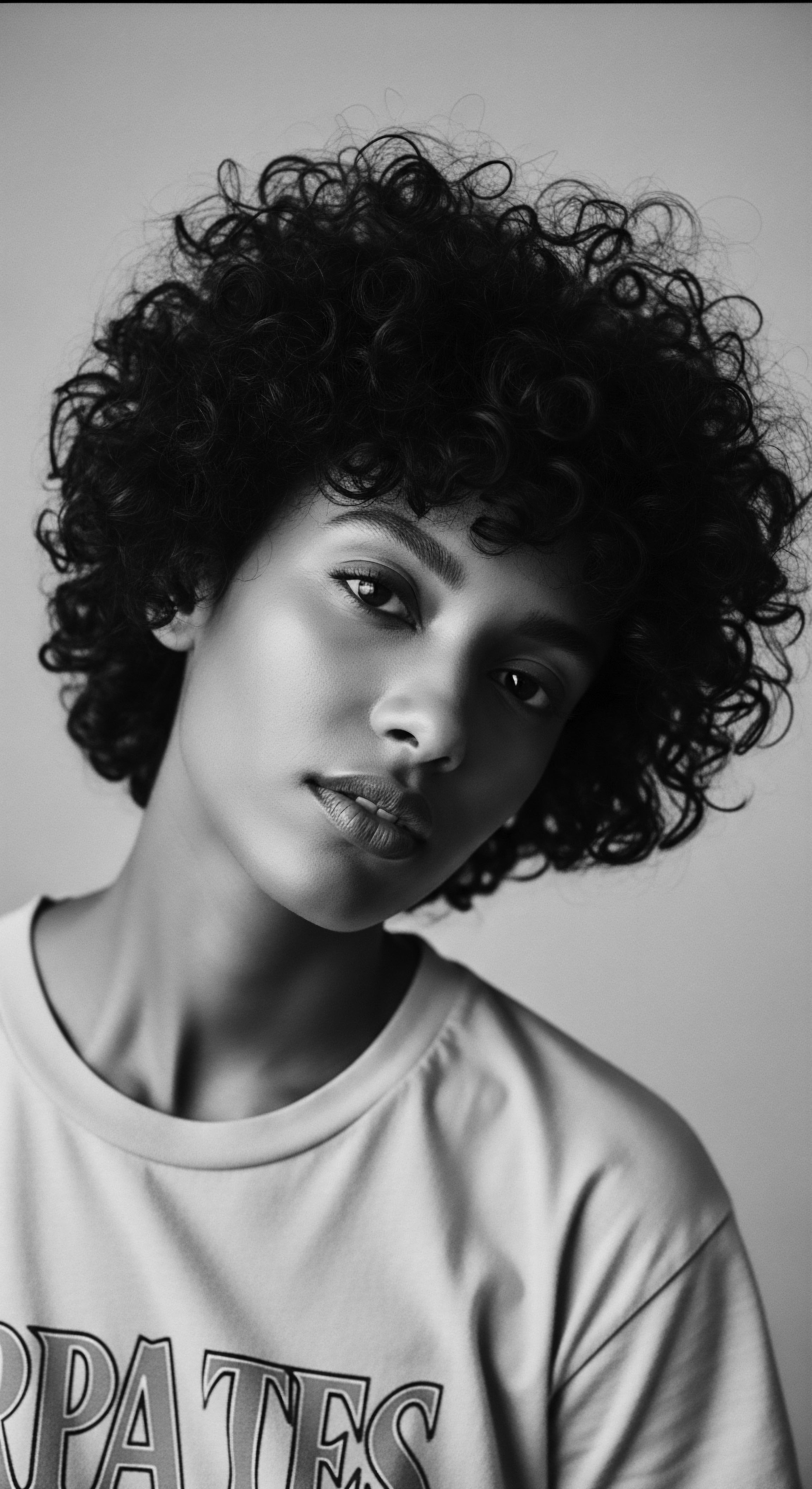
References
- Gittler, H. (1943). The effects of chemical agents on the hair. In Cosmetics and Hair Care Chemistry (Vol. 5, pp. 101-125). New York ❉ Technical Press.
- Robbins, C. R. (2012). Chemical and Physical Behavior of Human Hair (5th ed.). New York ❉ Springer.
- Tress, M. (1987). African-American Hair ❉ A Historical and Cultural Exploration. Oakland ❉ Black Heritage Publishing.
- Boutle, S. & White, A. (1998). The Science of Hair ❉ An Introductory Guide. London ❉ Palgrave Macmillan.
- Brown, K. (2009). Hair Story ❉ Untangling the Roots of Black Hair in America. New York ❉ St. Martin’s Griffin.
- Cruz, W. (2014). Keratin Structures and Hair Biology. Boston ❉ Academic Press.
- Byrd, A. D. & Tharps, L. L. (2019). Hair Story ❉ The Definitive Issue. New York ❉ St. Martin’s Press.
- Feughelman, M. (1997). Mechanical Properties of Wool and Hair. New York ❉ CRC Press.
